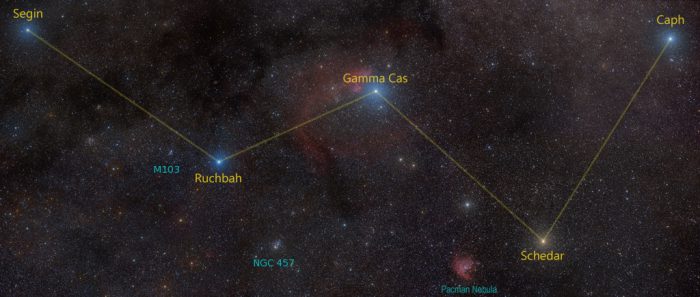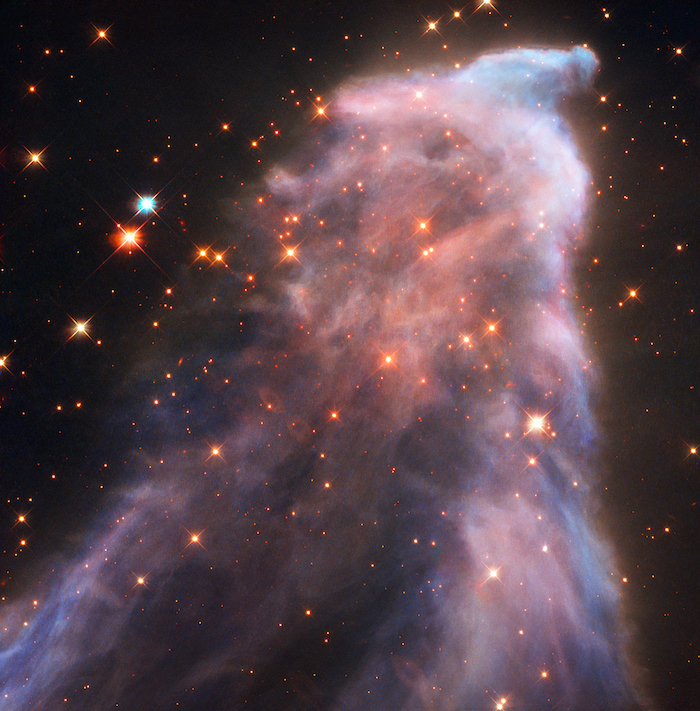We're guessing that we're not the first people to tell you this, but here it is anyway: Halloween is tomorrow. This modern day of candy and costumes began as the ancient Celtic festival called Samhain (say SOW-in). The basic idea was that you lit bonfires and wore outfits to ward off the spirits that would come from the underworld at this time of year. In other words, it was all about keeping away the ghosts.
But you know what? Ghosts are everywhere. Even in ... space!
Nonsense, you say? We have proof. Just in time for Halloween, the Hubble telescope has photographed the Ghost of Cassiopeia (say KAH-see-oh-peh-uh)!
What's a Cassiopeia?
In Greek mythology, Cassiopeia was a particularly vain queen who angered the gods. In space, Cassiopeia is the name of a constellation—a collection of stars seen as a pattern or figure. Formed by five main stars, this is one of the more well-known constellations in the sky. Here it is:

(NASA/Rogelio Bernal Andreo)
This constellation is also home to some amazing phenomena, including the supernova remnant (a.k.a star explosion leftovers), Cassiopeia A. This stunning object is home to the most powerful radio signals outside of our solar system. In other words, if you want to know what the universe's number one hit radio station looks like, well ...

(NASA/JPL-Caltech/STScI/CXC/SAO)
The (space) spirit of the season
But like any of us on Halloween, Cassiopeia is haunted by a spirit. Within the constellation—near the star Gamma Cas—is a nebula, or giant cloud of dust and gas in space. That is what the photo at the top of this post reveals—the Ghost Nebula or Ghost of Cassiopeia.
The top image, taken by the Hubble Space telescope, shows this nebula in greater detail than ever before. This nebula gets its glowing, otherworldly appearance thanks to how it both reflects and emits light energy. It also helps to be nearby a superstar like Gamma Cas. Gamma is 19 times the size of our Sun and 65,000 times as bright. No wonder this nebula looks so ghostly!
For a final bow, check out this high speed trip through the stars courtesy of the European Space Agency's Hubble YouTube page. All aboard!
 Scared? Don't be. This "ghost" is over 550 light years away! (ESA/Hubble/NASA)
Scared? Don't be. This "ghost" is over 550 light years away! (ESA/Hubble/NASA)










😀 I really liked this issue of OWL and I can’t wait for my next one to come in the post!
cool
🙄 not scary